As a student of Osteopathic Medicine in the late 1990’s and soon after qualifying as a Registered Osteopath, the most common presenting problem in the clinic in those days was lower back pain, which was much more common in manual workers whose days mainly consisted of bending, lifting and carrying. However, over time, more and more sedentary workers have needed osteopathic care, usually presenting with neck and upper back issues.
The reason for this has been two fold; one is that the technological revolution has resulted in more of the workforce being seated for much longer hours than before and secondly the advent of tablets and smart phones have created new ergonomic issues that we are still struggling to deal with effectively.
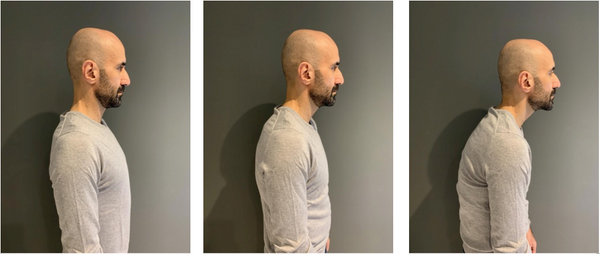
Long term (chronic) use of these devices can cause a phenomenon called Forward Head Posture (FHP). FHP, also known as Text neck, Scholar’s neck, Reader’s neck and Poke neck, is a very common condition and is described when the head, specifically the ear area, sits forward in relation to the shoulder joint. In the ideal posture our head should sit directly on top of our neck, and in line with your shoulders with minimal muscular activity balancing your head, sometimes described as a “golf ball on a tee.” An interesting fact to note is that for every 2cm your head protrudes forward from this ideal alignment, you add approximately 5kg of force onto your neck! That is a lot of potential pressure on joints and soft tissues of the neck and upper back which can cause a huge variety of issues, from headaches, arm pain, neck pain, shoulder issues, back pain, to even jaw problems.
What are the causes of FHP?
In modern societies, FHP is at pandemic levels, sedentary work, staring at screens, particularly tablets, laptops and phones, which force us to look down while typing and browsing are squarely to blame. Sitting and driving for long periods, especially if you round your shoulders and spine, can also contribute to FHP. If this continues for long periods, certain muscles become shortened and tight, and some become stretched, thus compromising the integrity of the ideal posture and putting the spinal elements under undue stress and making the whole area work inefficiently.
These postural imbalances result in long term issues from muscle strains or pain (myalgia), disc herniations (bulges), and arthritic/wear and tear changes (spondylosis), which carry the potential of irritating the delicate nerves of the spine, causing further pain, weakness and pins and needles into the arm and hand.
What can you do to address these postural imbalances?
Manual therapy is a very effective tool to address such imbalances, so my first piece of advice is to get seen by a qualified health care practitioner who specialises in pain and injuries. That may be a physiotherapist or an osteopath but other experienced manual therapists may be able to guide you through this process as well.
In these scenarios, one has to bear in mind that the body will respond to its primary stimulus, so if you are spending endless hours staring at your phone, there will be a limit on what a short session of manual therapy can do to reverse that. So you will need to be consistent with your exercises and postural adjustments to minimise the effects of FHP, thus maximising the effects of good manual therapy. Below are a few exercises which may help in cases of FHP.
Sub Occipital Release: The sub occipitals are small group of muscles at the base of your skull connecting it to the upper vertebrae of your neck. These can get particularly tight in cases of FHP, but you can gently release these using a massage or tennis ball. Lay on your back, or lean up against a wall with the ball under the base of your skull; roll gently up and down and sideways to work into the tender points, 20-30 seconds at a time. Work this mindfully; it should not be more than a 2 or 3 out of 10 for discomfort.
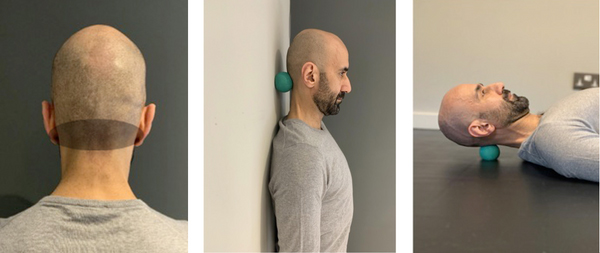
Sternocleidomastoid Release: This is an important muscle in the front of the neck, which can get very tight and therefore pull our head forward into FHP. You can release this by locating the band of muscle, which sits on either side of your throat, and gently pinching for about 20-40 seconds to relax the muscle; again, do not push through any pain; you should only experience mild discomfort.

Chin Tucks: These effectively reverse the poor form of FHP by activating the lengthened muscles, and stretching the tightened muscles, which cause the FHP phenomena. You can sit upright and gently draw and tuck your chin back while elongating the back of the neck, imagine someone is lifting you by the hair of the crown of your head. Hold for 5-10 seconds and repeat 20 times. Always avoid pain when doing these exercises, just touch on the mild discomfort of a stretch, never work through the pain.
You can also do chin tucks while laying on your front; this adds gravity to the muscular activity and helps develop strength in the required muscles. Hold the chin tuck while you lay on your stomach for 5-10 seconds, repeat up to 20 times.
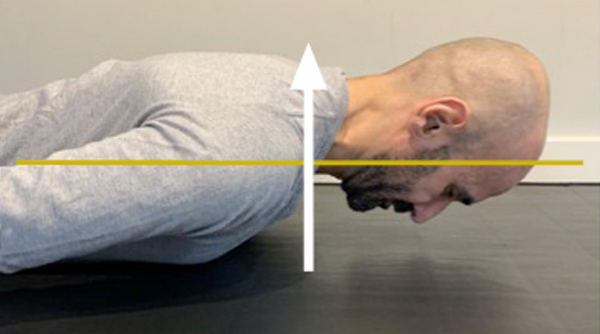
The Cervical “sit-up.”: Stabilising the neck requires activity of the muscles at the front of the neck, which are prone to becoming weak in FHP. Try laying on your back with your head in as neutral a position as is comfortable. Do a gentle chin tuck as described above, but then slowly lift your head off the floor/pillow by sending your chin towards the chest and bring back down with control while maintaining the chin tuck. Do 15-20 reps of these cervical sit-ups, repeat up to 3 times per day; you will feel the muscle activity towards the end of each set of these exercises.
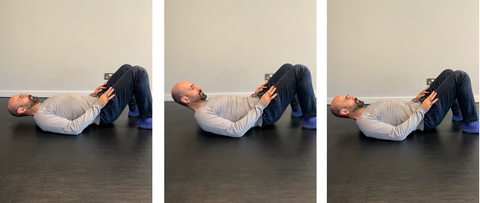
Doorway Stretch: Poor mobility of the rib cage, chest and mid-back can also contribute significantly to FHP and any accompanying neck pain. Foam rollers are excellent tools to mobilise these elements of the thorax, but you can get a great stretch of the chest by placing your forearms vertically on either side of a doorframe and gently pushing the chest through to stretch the front of the thorax. Again hold for 20-30 seconds and repeat three times. Again, never work through any painful movements.
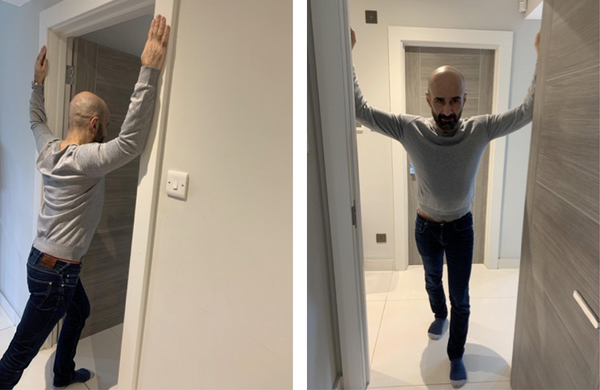
Postural advice: Computer/tablet work is a huge culprit of FHP, so it is essential to ensure that your workstation is set up optimally. If you work on a desktop device, ensure that the top third of the screen is at eye level, so your head can sit on top of your neck and look straight ahead. If, however, you have to work on a laptop, it is recommended to purchase a stand and a separate keyboard so that you can place the top third of the screen at eye level and the keyboard at elbow level.
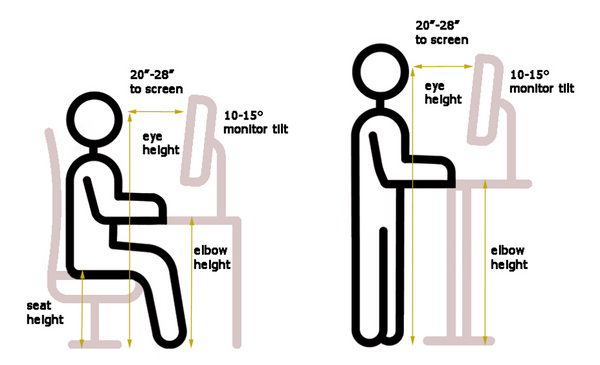
Only be sitting at your workstation if you really need to be there, for example stand up to take a call or to read a document. These mini and micro breaks will give those tight muscles a much needed break and will reduce the long term muscle tightening seen in FHP.
Bedtime is for Sleep.
One strict rule I have for all of my patients is that they should never bring a phone, tablet nor laptop into bed with them. Maintaining ideal posture when using such devices in a seated or even a standing position is difficult enough, but that is impossible in bed. Yes, even if you are sitting up in bed or laying on your side, there is no way to work around this, leave your bed for sleeping only!
Pillow advice is very specific to the individual, but be aware that too much pillow padding when on your back can also bring your head into FHP; try to sleep in as neutral a neck position as possible. A decent supportive pillow while sleeping on your side in neutral is my suggestion, if at all possible.
If you would like to book in for osteopathic consultation at my Mayfair and Hammersmith locations please call on 07958485864 to arrange. More information about my practice is available at www.mayfairosteopathy.com.

